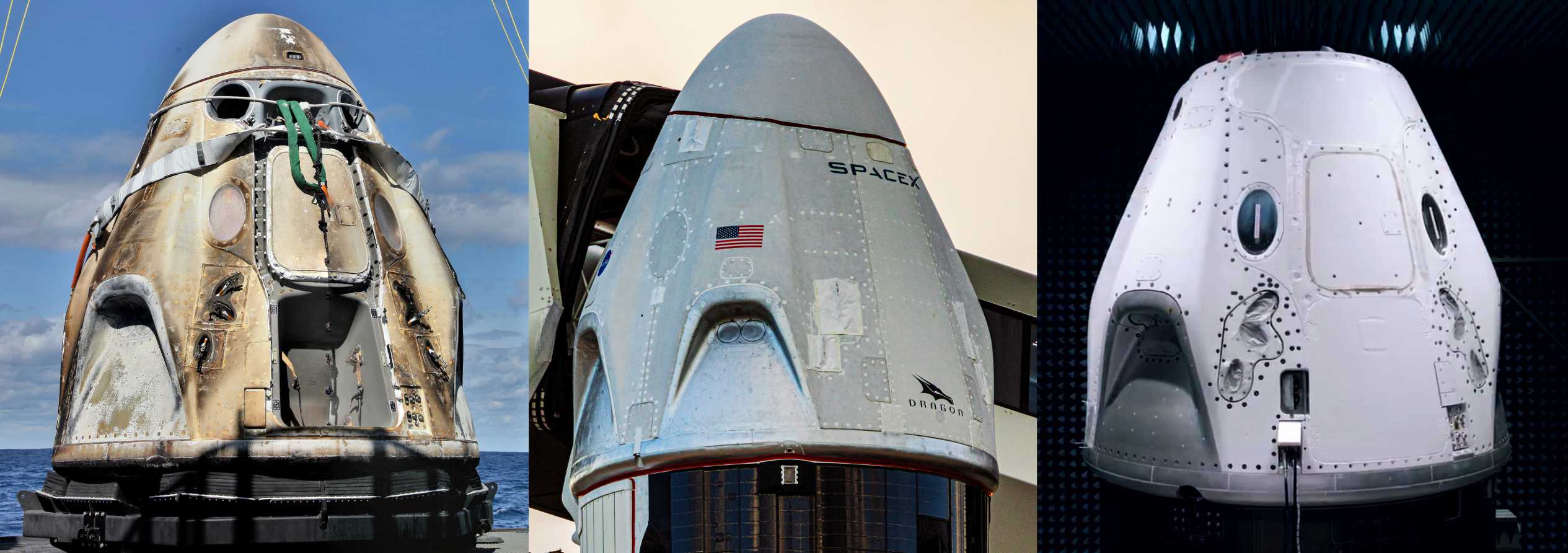
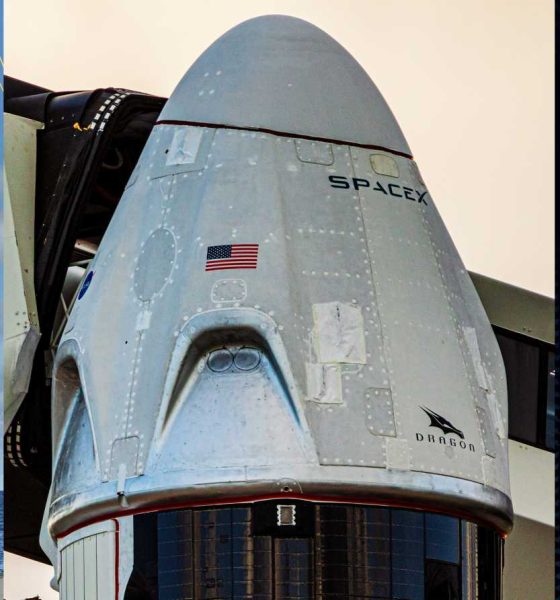
News
SpaceX space tourism ambitions made real with Crew Dragon's first private contract
Axiom Space has announced its first contract with SpaceX, revealing plans to launch three tourists to the International Space Station (ISS) on a Crew Dragon spacecraft as early as 2021
Building off of the extraordinary success of the privately-developed Cargo Dragon spacecraft, set to be retired perhaps just a month or so from now, SpaceX’s Crew Dragon spacecraft was designed almost from scratch to safely launch humans into space. While there are few guarantees in human spaceflight, SpaceX appears to be well on track towards its inaugural astronaut launch, and Crew Dragon is scheduled to support that mission – known as Demo-2 – as early as next month. If Demo-2 is successful and NASA signs off on Crew Dragon’s operational readiness, it’s starting to look like the spacecraft might have considerable demand even outside the space agency that funded its development.
Less than three weeks after SpaceX and Space Adventures revealed tentative plans to launch space tourists on a record-breaking Crew Dragon flight, this latest news seemingly implies that a separate company has gone a step further, putting real money down on its own space tourism launch contract. For SpaceX, this is now the second time in less than a month that the Crew Dragon spacecraft has received serious space tourism-related interest. The market, in other words, could be substantially larger than one might initially imagine.
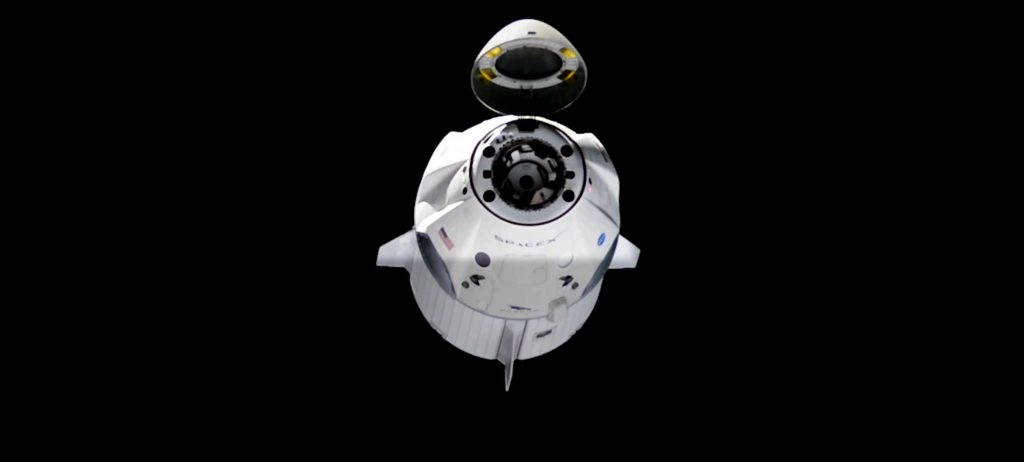
First announced on February 18th, Space Adventures – a private firm that has been working in the space tourism business for more than two decades – and SpaceX revealed that they’d signed an agreement to potentially support a unique opportunity for private astronauts. Likely completed without any exchange of funds, the joint agreement means that Space Adventures can now begin to seriously pursue customers for a Crew Dragon mission that could reach an altitude that only a handful of NASA Apollo and Gemini astronauts have gone beyond.
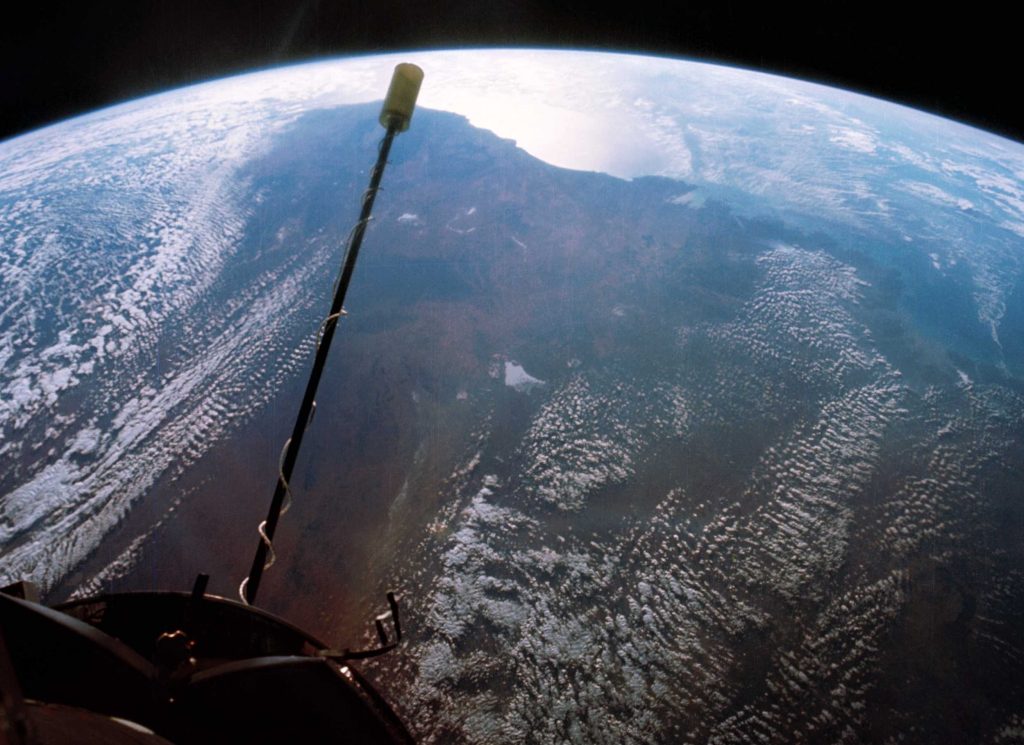
As such, there is technically no guarantee that the Space Adventures-SpaceX agreement will translate into any actual Crew Dragon or Falcon 9 contracts, although there is certainly a chance. The tourism company did successfully arrange eight orbital launches and space station visits for seven customers in the 2000s but has been relatively inactive in the decade since then.
Axiom Space, an unrelated venture, is also seriously interested in space tourism but is instead focused on the far more arduous task of building its own space station. Thanks to a recent agreement with NASA, potentially translating to $140M contract to build its first custom space station module, it appears to be increasingly likely that Axiom is not simply smoke and mirrors – depressingly common in space tourism industry.
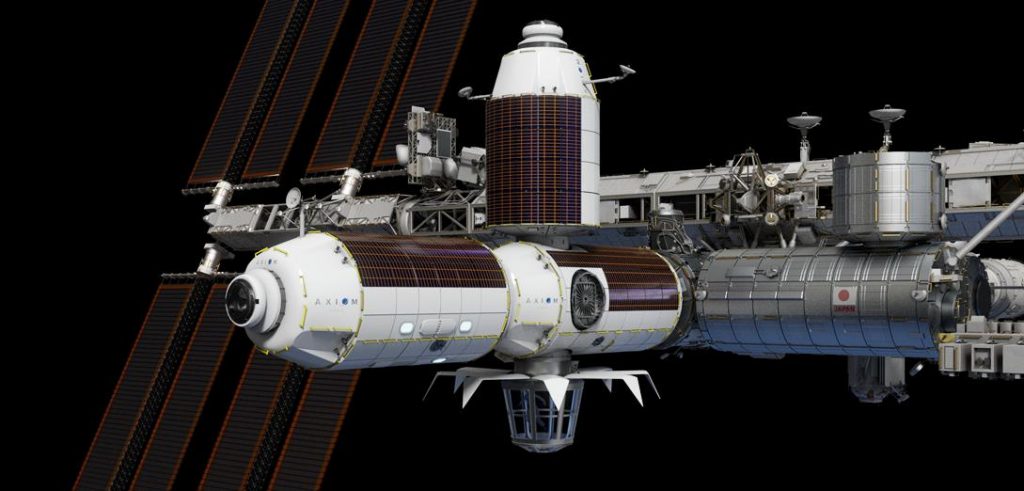
Intriguingly, the contract Axiom announced with SpaceX and Crew Dragon appears to be entirely unrelated to the company’s plans to build its own space station modules. Instead, the contract would see SpaceX train and launch an Axiom ‘commander’ and three private passengers to the existing ISS for more than a week before returning them safely to Earth. Perhaps more impressive is the schedule: Axiom wants SpaceX to launch its first space tourism mission as early as the second half of 2021 – potentially less than a year and a half from now.
Regardless, if this contract does result in Crew Dragon’s first dedicated space tourism launch and Axiom’s customers are satisfied, it’s safe to say that SpaceX will be the first to receive a call if or when Axiom needs more orbital taxi services or rockets to launch its space station modules in the mid-2020s.
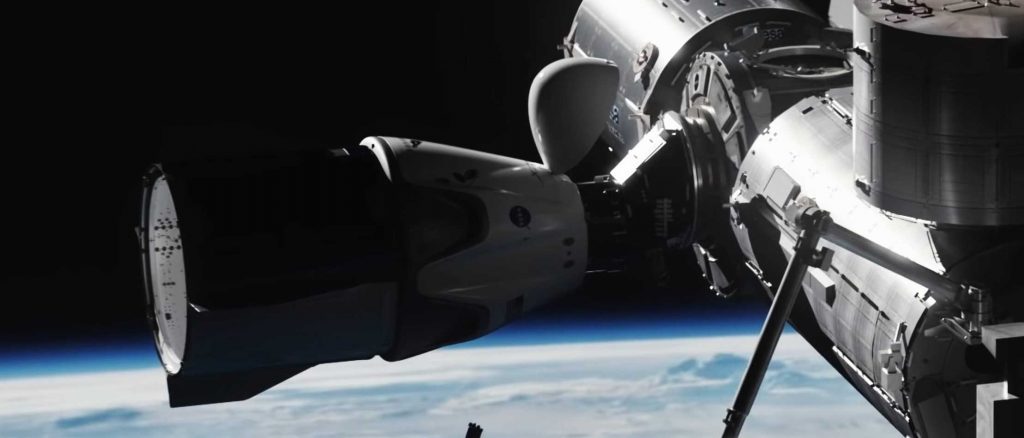
If its prices are notably better than what past tourism ventures have been able to offer, SpaceX might even be able to expand the market for private (orbital) human spaceflight, creating an entirely new niche for Crew Dragon. Given that NASA’s Commercial Crew Program contract anticipates requiring no more than an average of two dedicated Crew Dragon astronauts launches per year, it would not take much at all for SpaceX to double the spacecraft’s annual flight rate with the help of orbital tourism.
Check out Teslarati’s Marketplace! We offer Tesla accessories, including for the Tesla Cybertruck and Tesla Model 3.

News
Tesla starts showing how FSD will change lives in Europe
Local officials tested the system on narrow country roads and were impressed by FSD’s smooth, human-like driving, with some calling the service a game-changer for everyday life in areas that are far from urban centers.

Tesla has launched Europe’s first public shuttle service using Full Self-Driving (Supervised) in the rural Eifelkreis Bitburg-Prüm region of Germany, demonstrating how the technology can restore independence and mobility for people who struggle with limited transport options.
Local officials tested the system on narrow country roads and were impressed by FSD’s smooth, human-like driving, with some calling the service a game-changer for everyday life in areas that are far from urban centers.
Officials see real impact on rural residents
Arzfeld Mayor Johannes Kuhl and District Administrator Andreas Kruppert personally tested the Tesla shuttle service. This allowed them to see just how well FSD navigated winding lanes and rural roads confidently. Kruppert said, “Autonomous driving sounds like science fiction to many, but we simply see here that it works totally well in rural regions too.” Kuhl, for his part, also noted that FSD “feels like a very experienced driver.”
The pilot complements the area’s “Citizen Bus” program, which provides on-demand rides for elderly residents who can no longer drive themselves. Tesla Europe shared a video of a demonstration of the service, highlighting how FSD gives people their freedom back, even in places where public transport is not as prevalent.
What the Ministry for Economic Affairs and Transport says
Rhineland-Palatinate’s Minister Daniela Schmitt supported the project, praising the collaboration that made this “first of its kind in Europe” possible. As per the ministry, the rural rollout for the service shows FSD’s potential beyond major cities, and it delivers tangible benefits like grocery runs, doctor visits, and social connections for isolated residents.
“Reliable and flexible mobility is especially vital in rural areas. With the launch of a shuttle service using self-driving vehicles (FSD supervised) by Tesla in the Eifelkreis Bitburg-Prüm, an innovative pilot project is now getting underway that complements local community bus services. It is the first project of its kind in Europe.
“The result is a real gain for rural mobility: greater accessibility, more flexibility and tangible benefits for everyday life. A strong signal for innovation, cooperation and future-oriented mobility beyond urban centers,” the ministry wrote in a LinkedIn post.
News
Tesla China quietly posts Robotaxi-related job listing
Tesla China is currently seeking a Low Voltage Electrical Engineer to work on circuit board design for the company’s autonomous vehicles.

Tesla has posted a new job listing in Shanghai explicitly tied to its Robotaxi program, fueling speculation that the company is preparing to launch its dedicated autonomous ride-hailing service in China.
As noted in the listing, Tesla China is currently seeking a Low Voltage Electrical Engineer to work on circuit board design for the company’s autonomous vehicles.
Robotaxi-specific role
The listing, which was shared on social media platform X by industry watcher @tslaming, suggested that Tesla China is looking to fill the role urgently. The job listing itself specifically mentions that the person hired for the role will be working on the Low Voltage Hardware team, which would design the circuit boards that would serve as the nervous system of the Robotaxi.
Key tasks for the role, as indicated in the job listing, include collaboration with PCB layout, firmware, mechanical, program management, and validation teams, among other responsibilities. The role is based in Shanghai.
China Robotaxi launch
China represents a massive potential market for robotaxis, with its dense urban centers and supportive policies in select cities. Tesla has limited permission to roll out FSD in the country, though despite this, its vehicles have been hailed as among the best in the market when it comes to autonomous features. So far, at least, it appears that China supports Tesla’s FSD and Robotaxi rollout.
This was hinted at in November, when Tesla brought the Cybercab to the 8th China International Import Expo (CIIE) in Shanghai, marking the first time that the autonomous two-seater was brought to the Asia-Pacific region. The vehicle, despite not having a release date in China, received a significant amount of interest among the event’s attendees.
Elon Musk
Elon Musk and Tesla AI Director share insights after empty driver seat Robotaxi rides
The executives’ unoccupied tests hint at the rapid progress of Tesla’s unsupervised Robotaxi efforts.

Tesla CEO Elon Musk and AI Director Ashok Elluswamy celebrated Christmas Eve by sharing personal experiences with Robotaxi vehicles that had no safety monitor or occupant in the driver’s seat. Musk described the system’s “perfect driving” around Austin, while Elluswamy posted video from the back seat, calling it “an amazing experience.”
The executives’ unoccupied tests hint at the rapid progress of Tesla’s unsupervised Robotaxi efforts.
Elon and Ashok’s firsthand Robotaxi insights
Prior to Musk and the Tesla AI Director’s posts, sightings of unmanned Teslas navigating public roads were widely shared on social media. One such vehicle was spotted in Austin, Texas, which Elon Musk acknowleged by stating that “Testing is underway with no occupants in the car.”
Based on his Christmas Eve post, Musk seemed to have tested an unmanned Tesla himself. “A Tesla with no safety monitor in the car and me sitting in the passenger seat took me all around Austin on Sunday with perfect driving,” Musk wrote in his post.
Elluswamy responded with a 2-minute video showing himself in the rear of an unmanned Tesla. The video featured the vehicle’s empty front seats, as well as its smooth handling through real-world traffic. He captioned his video with the words, “It’s an amazing experience!”
Towards Unsupervised operations
During an xAI Hackathon earlier this month, Elon Musk mentioned that Tesla owed be removing Safety Monitors from its Robotaxis in Austin in just three weeks. “Unsupervised is pretty much solved at this point. So there will be Tesla Robotaxis operating in Austin with no one in them. Not even anyone in the passenger seat in about three weeks,” he said. Musk echoed similar estimates at the 2025 Annual Shareholder Meeting and the Q3 2025 earnings call.
Considering the insights that were posted Musk and Elluswamy, it does appear that Tesla is working hard towards operating its Robotaxis with no safety monitors. This is quite impressive considering that the service was launched just earlier this year.








